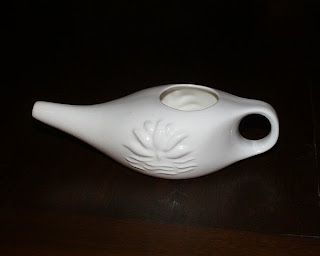 |
| Image Credit: Alex Brown. |
It’s been a slow news week for science. The days between Christmas and New Year’s Eve can be a wasteland of year-in-review lists and other fluff concocted to facilitate holiday vacations. But all it took was an animated short on the science of sparkling wine from the American Chemical Society to stop my grumbling and get me on board with the lightness of the season. Forget real discoveries and real news and real whatever else. Let’s talk champagne.
What makes Champagne and other sparkling wines special is, of course, their bubbles. These are not only fun to observe, they also release aromas as they reach the liquid’s surface and burst, increasing the whole sensory experience thing. Dissolved carbon dioxide (CO2) gives champagne its sparkle. Higher pressures and lower temperatures allow more CO2 to be dissolved into wine than the liquid could hold in standard conditions. Your chilled bottle of champagne is under a good deal of pressure (thus the signature pop made when the cork is removed). Once uncorked, this pressure drops, and the amount of CO2 that can be crammed into the liquid drops with it. CO2 gas makes a break for it through the surface of the beverage and voila – festive bubbles. The trick to enjoying a glass of sparkling wine is too maximize the spectacle of bubbles without losing the molecule that makes them too quickly. Nobody likes flat Champagne.
Putting the Bubbles in the Bottle
The simplest way to get bubbles into liquid is just to inject CO2 gas, which is how soda is made. But sparkling wines can take advantage of fermentation to form their fizz. Officially, Champagne is only Champagne if it comes from the Champagne region of France. But the “méthode traditionnelle” (aka méthode champenoise, when in France) by which it is made isn’t proprietary information. Spanish Cava for instance (my preferred bubble water) is also made using the Champagne method.
Here’s how it works. All wines are made through fermentation, that process where yeast metabolizes sugar and turns it into ethanol (drinkin’ alcohol) and CO2.* This “primary fermentation” occurs in tanks and CO2 generated is allowed to dissipate into the atmosphere. Champagne and its ilk, however, undergo a second fermentation once already tucked into their bottles.† Some other gunk also accumulates in the process (dead yeast cells and such) and must be ousted before the final corking. To collect and remove the “lees”, the bottles are stored at an angle, cork-side facing downward, and periodically prodded so that the stuff pools near the mouth of the bottle and can be removed with minimal wine loss. These are some of the bells and whistles that can make Champagne pricier than more crudely made sparkling beverages, even before the retail mark-up.
Ideal Glass Law
In late November I served my father, a wine enthusiast/wine snob, sparkling wine in a juice glass. For this transgression I was rewarded with an early Christmas gift – a set of champagne flutes. The most obvious reason why stemware is the best choice for sparkling wine is that the stem helps keep your sweaty hands off the bowl of the glass. Holding a glass from its stem prevents heat transfer to the liquid (recall that increasing heat speeds up CO2 escape).
But the shape of the glass matters too. The two dominant vessels for sparkling wine serving are the flute (the tall one) and the coupe (think Champagne fountain). Scientists have done a lot of gas measuring to help you choose your glass, and mostly the flute wins. Being taller and narrower, flutes not only keep beverages cooler, they also offer less surface area for CO2 gas to launch. Coupes basically hemorrhage CO2 for the first few minutes after being poured and then calm down, by which time the wine has lost a lot of its fizz. Flutes maintain a steadier movement of bubbles. Flutes are also better designed to showcase the bubbles. The entire vertical column is filled with bubbly movement, whereas coupes have a less effervescent “dead zone” at the portion of the bowl furthest from the center.
Less than half of the CO2 exiting the liquid departs in the form of aesthetically pleasing bubble. Much of it disappears through unceremonious “invisible diffusion” into the air. This too is higher in the coupe, though less so than expected, given that glass’s abundant surface area. This finding can be attributed to the greater bubbling going on in the flute. The bubbles travel further and mix more vigorously, and thus more gas is lost per unit of surface area. But overall, unless you have your heart set on that champagne fountain, you’re better off with the flute.
Right Angles
Now that you have the perfect glass, don’t ruin everything by pouring the wrong way. It turns out that the angle at which the glass is held during the pour also impacts how much CO2 escapes before you even get the flute to your mouth. While champagne is normally poured like any other wine – into a glass standing straight up on a table – painstaking experimentation has demonstrated that you’re better off holding the glass at an angle – as if you were pouring a beer. The pour is a turbulent time for newly uncorked Champagne, and an angled glass minimizes the CO2 loss during this vulnerable stage, leaving more bubbles to bounce around once you’re finally drinking your drink.
Well cheers then. And don’t forget to hold the glass from the stem. In addition to the temperature issues we discussed, you’ll also get a better clink that way. Clink!
* There are more steps, but just face it, if I started telling you about glycolysis, you would stop reading.
† Another method, used for sparkling wines like Prosecco, does a second fermentation in tanks and then bottles the wine under pressure before it loses its pop.

